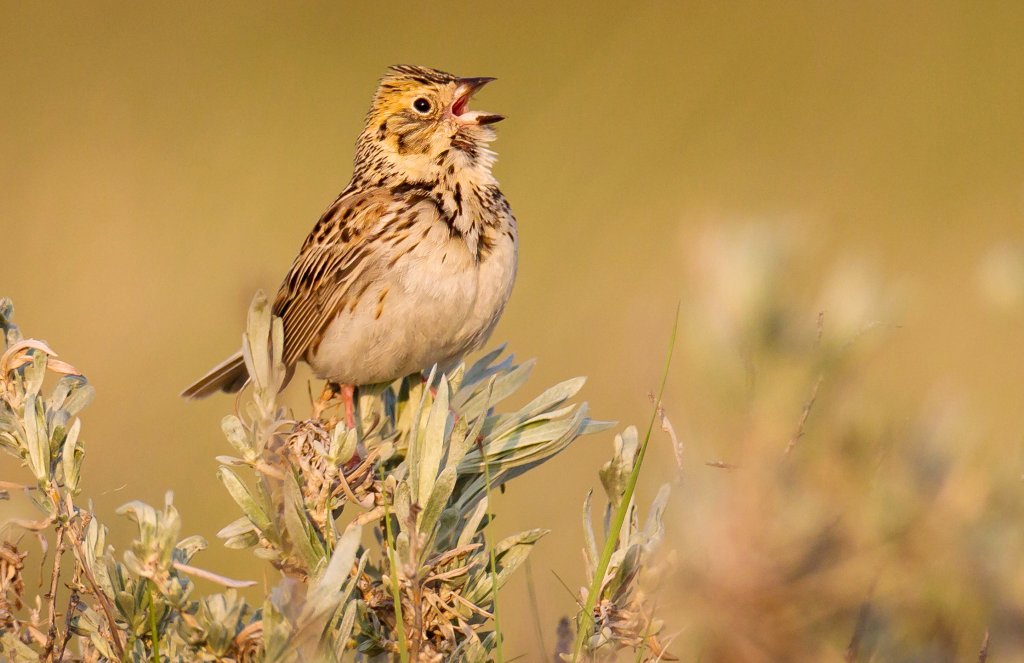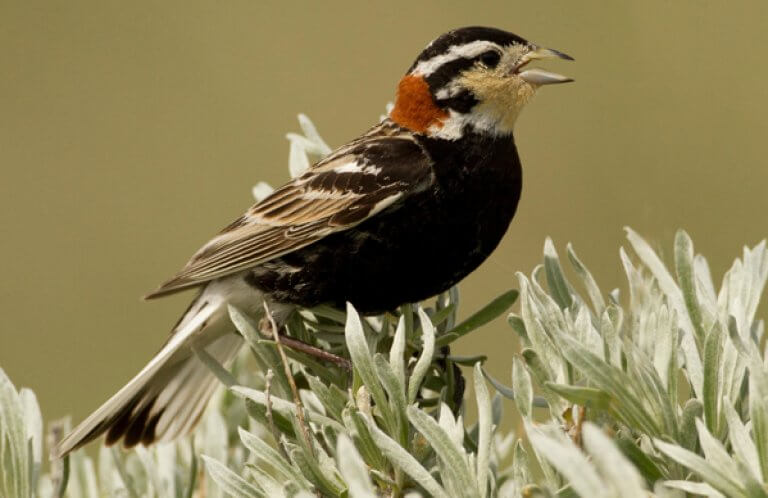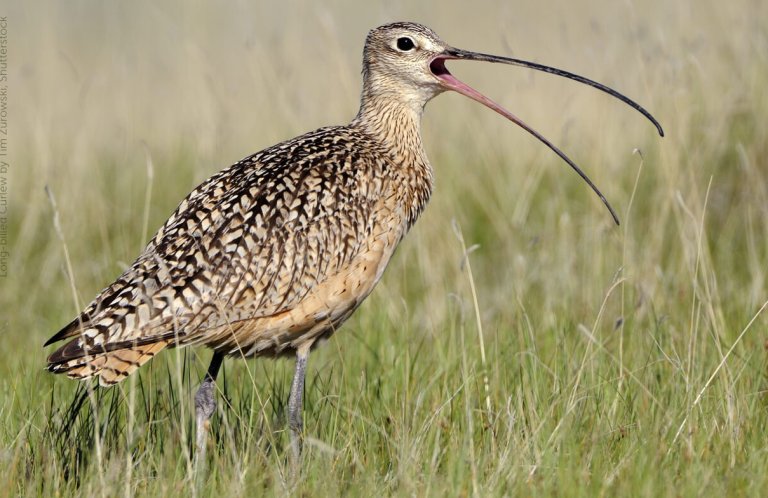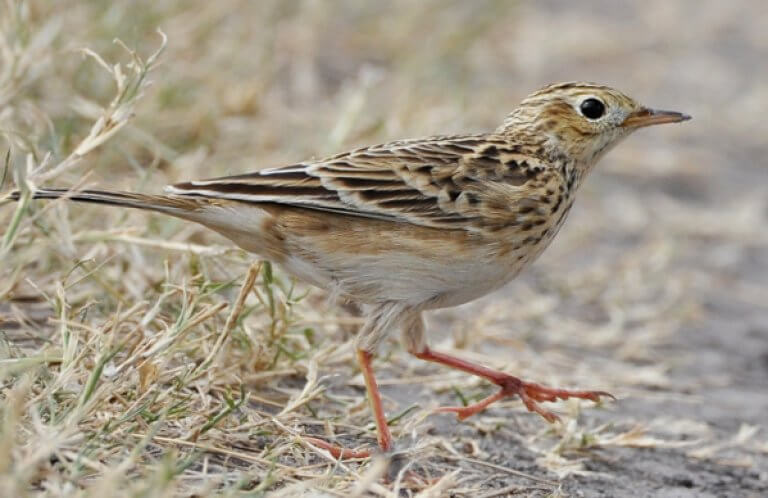About
The Baird's Sparrow and its close relative the Henslow's Sparrow are the only two species in the genus Centronyx (meaning spurred claw). This name refers to these birds' long hind toes, a feature found in other ground-dwelling grassland birds such as the Chestnut-collared Longspur.
This species is very secretive, preferring to run through the grass when flushed, instead of flying. Yet even when sighted, it can still be difficult to tell apart from other grassland sparrows, such as the Grasshopper Sparrow.
How to ID a Baird's Sparrow
This subtly marked sparrow's most distinguishing feature is the ochre-yellow, straw-like color of its face, nape, and crown stripe. It also “wears” a neat necklace of vertical dark streaks across its upper breast, and has two dark spots behind its eye.
Songs and Sounds
The Baird's Sparrow's song consists of a short series of two or three high, thin introductory notes followed by a tinkling trill.
Listen here:
Breeding and Feeding
Males arrive on the breeding grounds in early to mid-May, before the females, and establish territories of up to four acres. During courtship, males are uncharacteristically easy to see, since they perch in the open while singing to attract a mate. This species is usually monogamous during the breeding season, although the female may switch mates between broods.
The well-concealed nest is located in a simple scrape, usually at the base of a grass clump. It has two layers: a coarse outer lining of grass, stems, and leaves, and a soft inner layer of finer materials such as grasses, hair, and moss.
The female lays a clutch of four to five eggs, which hatch in less than two weeks. The young fledge in an additional week to week and a half. Both sexes guard the nest and young. Baird's Sparrows sometimes produce multiple broods in a season.
This skulking bird forages on the ground, mostly hidden from view, gleaning food from clumps of grass, litter, and stems. During the breeding season, it consumes and also feeds its nestlings protein-rich invertebrates, including beetles, grasshoppers, and caterpillars. Plant matter rounds out the diet, including a variety of grass and weed seeds, and waste grains.

Region and Range

The Baird's Sparrow breeds from south-central Canada south to eastern Montana, North Dakota, and northern reaches of South Dakota. This species winters from southern Arizona and southwestern New Mexico (with some at times in West Texas) south to north-central Mexico. There, it shares wintering habitat with the Long-billed Curlew, Sprague's Pipit, and Thick-billed Longspur.
Baird's Sparrows are partially nomadic, with the locations of breeding populations shifting dramatically from year to year. This tendency probably evolved in response to the effects of drought, fire, and the movements of bison herds over the prairie, which affected the condition and successional state of the habitat.
Conservation
The chief threat to the Baird's Sparrow is habitat loss. The vast majority of native grassland has disappeared due to agriculture, overgrazing, fire suppression, and invasive plants. Fragmentation of native prairie makes this sparrow's nests more vulnerable to predators and to brood parasitism by the Brown-headed Cowbird.
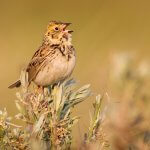
Help support ABC's conservation mission!
Through its BirdScapes approach, ABC's Migratory Birds Program is working to stem population declines of Baird's Sparrows and other bird species. The BirdScapes strategy aims to conserve geographically linked habitats on breeding and wintering grounds, and at migration stopover sites.
In Mexico, ABC is working with partner Pronatura Noreste to implement sustainable land stewardship practices in the Valles Centrales BirdScape, where many Baird's Sparrows winter.
Get Involved
Policies enacted by the U.S. Congress and federal agencies, such as the U.S. Fish and Wildlife Service, have a huge impact on migratory birds. You can help shape these rules for the better by urging lawmakers to prioritize birds, bird habitat, and bird-friendly measures. To get started, visit ABC's Action Center.
Living a bird-friendly life can have an immediate impact on migratory birds in the United States. Doing so can be as easy as adding native plants to your garden, avoiding pesticides, and keeping cats indoors. To learn more, visit our Bird-Friendly Life page.
American Bird Conservancy and our Migratory Bird Joint Venture partners have improved conservation management on more than 8.5 million acres of U.S. bird habitat — an area larger than the state of Maryland — over the last ten years. That's not all: With the help of international partners, we've established a network of more than 100 areas of priority bird habitat across the Americas, helping to ensure that birds' needs are met during all stages of their lifecycles. These are monumental undertakings, requiring the support of many, and you can help by making a gift today.





































